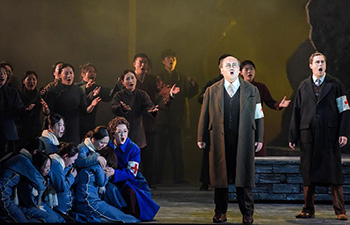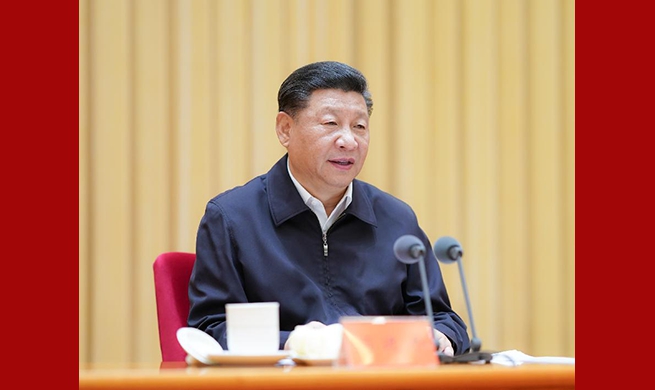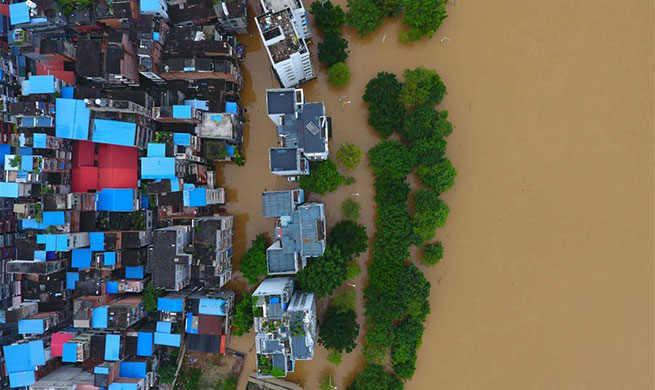by Xinhua writers Zhong Qun, Huang Haoran and Ren Yanxin
BEIJING, July 10 (Xinhua) -- As summer holiday arrives, Zhang Yizhi, from east China's Fujian Province, frets over the idea of having to bring his child to a variety of extra-curriculum training classes.
"I just applied for an English class for my child, which cost a lot," Zhang said. "I hate to put so much pressure on my child, but if he hopes to excel in the current education system, he has to catch up."
For many years, parents in China have complained that the Chinese education system places too much emphasis on scores. They say the system puts too much pressure on students, many of whom turn out to be "good at taking exams but poor in life abilities."
All is set to change.
The Communist Party of China Central Committee and State Council Monday published a new guideline for advancing education reform and improving the quality of compulsory education.
The guideline aims to develop an education system that will foster citizens with an all-around moral, intellectual, physical and cultural grounding, in addition to a hard-working spirit, according to the document.
Moral education and all-round development of students will be priorities, and the efforts must cover every student in every school, it added.
It also called for strengthening physical education, enhancing cultural training with more art-based curriculums and activities, and encouraging students to participate in more manual labor to boost their hard-working spirit.
Experts believe the guideline will reshape the current education system, allow students to relieve pressure from too much study and boost their all-round development.
PACKED WITH COURSES AND CLASSES
Under the current exam-oriented education system, Chinese students are overloaded with schoolwork and lack sufficient physical exercise, which has given rise to health problems such as obesity and myopia.
For example, among Chinese children aged 6 to 17, 9.6 percent are overweight and 6.4 percent are obese, according to statistics from the Chinese Center for Disease Control and Prevention in 2017.
More than half of Chinese children and teenagers suffered from myopia in 2018, figures from the National Health Commissions show. The myopia rate among six-year-old children in China stood at 14.5 percent last year.
Xiao Hu, an 11-year-old primary school student from Zhangjiakou, in north China's Hebei Province, usually spends over two hours on her homework every day.
A typical day for her starts with school classes. After arriving home, she starts doing her homework at 7 p.m. and usually finishes at 9:30 p.m.
Her life is packed with preparatory courses and cram classes. English classes usually start from the third grade, but now more parents are taking their kids to private educational institutions to learn English at an early age for fear of falling behind.
"Now we only have one 45-minute physical education class a week but we're always told that the class would be canceled, with various excuses, to make room for other courses like Chinese and maths," Hu told Xinhua, adding that roughly 60 percent of her classmates suffer from nearsightedness and astigmatism due to so much time studying indoors.
A NEW LESSON FOR EDUCATION
Liu Xudong, director of the college of education at Northwest Normal University in Gansu Province, said Chinese parents and teachers used to believe "scores first" and have always ignored the importance of children's mental and physical well-being.
"Education is not only about imparting knowledge, but also about cultivating people with sound personalities, open-mindedness and healthy bodies," Liu said.
He said strengthening physical education, enhancing cultural training, and encouraging students to participate in more physical work can boost children's hard-working spirit and benefit their long-term development, as is stipulated in the government guideline.
"The implementation of this new guideline will take time, but the goal is clear: moral education and all-round development of students," Liu said.
"The evaluation system needs to be reformed," said Wu Zunmin, a professor from East China Normal University. "Examinations should give children more opportunities to show their talents, and recognize that each child is gifted."
"HAPPIER THAN BEFORE"
Authorities in some provinces in China are already piloting a variety of ways to deal with issues in the current education system.
For instance, Chang'an Primary School in northeast China's Heilongjiang Province has been transforming education with a "happy index." In the "happy index," "1" means "not happy" and "5" means "happy." The numbers reflect the children's mood in real time.
Liu Junhong, a teacher of the school, listens to the "numbers" reported by students in every morning roll call.
"For students under 3, I will talk with them that day," Liu said.
Moreover, teachers at the school use caricatures to evaluate students' exercises, according to the vice principal of the school.
The school also invites parents to be judges in the students' final exams, said Chu Chenguang, a teacher from the school.
"Instead of simply taking paper exams, the students also answer questions one by one from their parents," Chu said. "This method allows the parents to evaluate the growth and changes in their children."
These days, junior class students in Lanzhou Oriental Secondary School in Gansu Province can have two physical education classes each week, including sports and other outdoor activities.
Bai Mengyao, a Chinese teacher at the school, said more outdoor physical exercises can help students relieve pressure and perform better in class.
"It feels like they are happier than before," she said.
(Zhao Jiasong and Zhao Lei contributed to the report.)

















